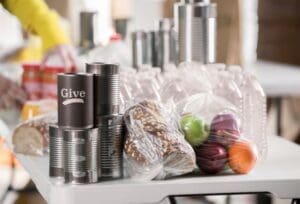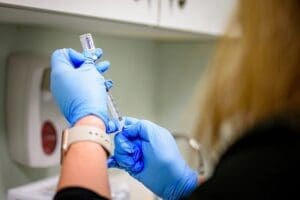As summer ends and Kansas students head back to school, AAA Kansas urges drivers to be particularly cautious, especially during the before- and after-school hours. This period is particularly risky due to the presence of inexperienced drivers, school buses, student pedestrians, and cyclists all sharing the road. Through its annual ‘School’s Open – Drive Carefully’ campaign, AAA seeks to reduce fatalities and injuries among children and others during the busy school commute.
As students return to school, drivers need to avoid distractions and be more aware and cautious. Children will be walking and biking to school, getting on and off buses, and entering and exiting cars as parents drop them off and pick them up. These activities create additional hazards for both drivers and student pedestrians and cyclists. Moreover, many new, inexperienced teen drivers will be heading to school for the first time, raising further traffic safety concerns.
Nearly one-fifth of traffic fatalities involving children under 15 are pedestrians, with the highest number of school-age pedestrian deaths occurring between 3 PM and 4 PM.
To ensure the safety of school children, AAA Kansas recommends the following seven safety tips:
- Slow down. Speed limits in school zones are lowered for a reason. The AAA Foundation for Traffic Safety reports that a pedestrian hit by a vehicle traveling at 25 mph is nearly two-thirds less likely to be killed compared to one struck by a vehicle going just 10 mph faster.
- Ditch the distractions. Speed limits in school zones are lowered for a reason. The AAA Foundation for Traffic Safety reports that a pedestrian hit by a vehicle traveling at 25 mph is nearly two-thirds less likely to be killed compared to one struck by a vehicle going just 10 mph faster.
- Brake for buses. Speed limits in school zones are lowered for a reason. The AAA Foundation for Traffic Safety reports that a pedestrian hit by a vehicle traveling at 25 mph is nearly two-thirds less likely to be killed compared to one struck by a vehicle going just 10 mph faster.
- Reverse responsibly. All vehicles have blind spots. Before backing up slowly, check for children on the sidewalk, in the driveway, and around your vehicle. Teach your children never to play in, under, or around vehicles, even if they are parked.
- Talk with your teen driver. Car crashes are a leading cause of death for teens in the United States, with over one in four fatal accidents involving teen drivers occurring between 3 PM and 7 PM, during after-school hours.
- Come to a complete stop. Research indicates that over one-third of drivers roll through stop signs in school zones or neighborhoods. Always come to a complete stop and check carefully for children on sidewalks and in crosswalks before proceeding.
- Be aware of bicycles. Children on bicycles can be inexperienced, unsteady, and unpredictable. Slow down and maintain at least three feet of passing distance between your vehicle and the bike. If your child rides a bicycle to school, ensure they understand proper bicycle safety rules and always wear a properly fitted helmet.













